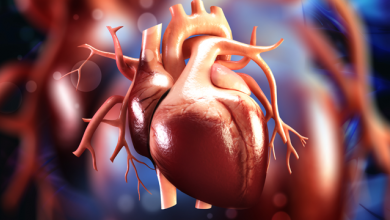Search results
Transesophageal Echocardiography
Author(s):
Bijoy K Khandheria
Added:
3 years ago
Article
Author(s):
Darwin Jeyaraj
,
David S Rosenbaum
Added:
3 years ago
Heart disease is the leading cause of death in the US with 700,000 deaths annually, of which 460,000 are attributable to sudden cardiac death (SCD). SCD is usually attributed to ventricular fibrillation (VF). Despite recent reductions in cardiac mortality from other causes, the incidence of SCD remains high with minimal decline in the last decade. The large majority of patients who suffer life…
View more
Author(s):
Justin P Sheehy
,
Adnan K Chhatriwalla
Added:
3 years ago
Author(s):
Abdulah Alrifai
,
Mohamad Kabach
,
Jonathan Nieves
,
et al
Added:
3 years ago
More than 10 million Americans suffer annually from angina.1 For decades, most of the attention has been focused on epicardial coronary artery disease (CAD). In a European registry of 11,000 stable angina patients, 65% of women and 32% of men had no obstructive CAD (<50% stenosis); however, multiple other studies have demonstrated only 30% of patients have significant obstructive epicardial…
View more
Amyloid Heart Disease
Author(s):
Yaser Nemshah
,
Alex Clavijo
,
Gyanendra Sharma
Added:
3 years ago
Article
Author(s):
Steven R Sigman
Added:
3 years ago
Although less common than other forms of cardiomyopathy, cardiac sarcoidosis (CS), both as part of a systemic process and in its isolated form, is an important, and increasingly recognized disorder. This is felt to be due, in part, to advances in cardiac imaging and heightened awareness of the disorder.1,2 CS is associated with high rates of morbidity and mortality, including sudden cardiac death…
View more
Author(s):
Soraya M Samii
,
Javier E Banchs
Added:
3 years ago
The use of implantable devices to treat arrhythmias started with the implantable pacemaker back in the late 1950s. The risks and costs of implantation limited the indications for the procedure initially. A similar pattern was seen with the initial implantable cardioverter-defibrillators (ICDs) in the early 1980s. In the late 1990s, technology of both these devices focused on the management of…
View more
Author(s):
Ijeoma Isiadinso
,
Nanette K Wenger
Added:
3 years ago
Prevalence of Cardiovascular Disease
CVD is the leading cause of death in Europe and the United States. CVD mortality is on the decline in many countries, and in several European countries, cancer has now surpassed CVD as the leading cause of death.1 However, CVD remains the leading cause of death for both men and women in the United States and results in more female deaths than cancer, lung…
View more
Author(s):
David S Rosenbaum
Added:
3 years ago
Heart disease is the leading cause of death in the US with 700,000 deaths annually, of which 460,000 are attributable to sudden cardiac death (SCD).1,2 SCD is usually attributed to ventricular fibrillation (VF). Despite recent reductions in cardiac mortality from other causes, the incidence of SCD remains high with minimal decline in the last decade. The large majority of patients who suffer life…
View more
Author(s):
Jonathan N Johnson
,
Frank Cetta
Added:
3 years ago
The last 60 years have seen significant changes in the care of congenital heart disease for both pediatric and adult patients. Increasing patient survival rates have widened the number and scope of potential patients seen by congenital cardiologists.1 These patients often undergo multiple surgeries, particularly since few lesions are truly ‘repaired.’ The majority of patients will have residua or…
View more












 « First
« First